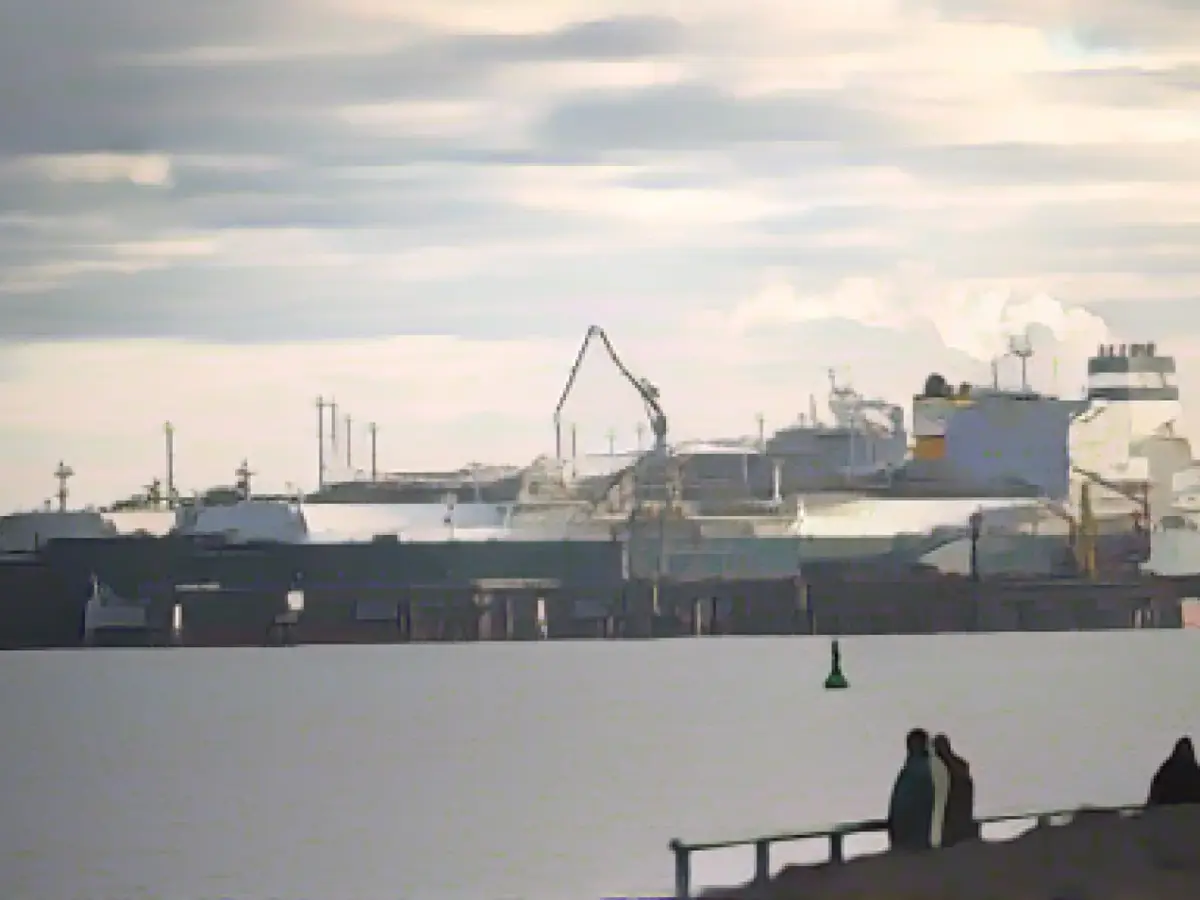Energy - LNG terminal without negative impact on water quality
Contrary to the fears of environmentalists, the cleaning of the LNG terminal in Wilhelmshaven with chlorine has not had any negative effects on the water, according to the responsible authority. After eleven months of operation, the measured values of the various chlorine and by-products were mostly even below the respective detection limit, the Lower Saxony Water Management, Coastal and Environmental Protection Agency (NLWKN) announced on Friday. The state of Lower Saxony had ordered intensive aquatic ecological monitoring for the commissioning of the floating terminal.
Environmental protection associations, local residents and mussel fishermen had criticized the discharge of chlorinated wastewater into the Jade. They feared that the continuous discharge of the chemical, which is harmful to organisms, would have a negative impact on nature and living creatures - including in the adjacent Wadden Sea.
The terminal's cooling and process systems have to be cleaned with chlorine. Experts estimate that up to 178 million cubic meters of wastewater containing chlorine are discharged into the Jade every year. Chlorine is intended to prevent biofouling.
The natural gas delivered by tankers, cooled down to minus 162 degrees and liquefied, must be heated and thus made gaseous. This is mainly done using seawater. To prevent the terminal's systems from becoming overgrown with algae and mussels, they are flushed with chlorine.
According to the NLWKN, the effect of discharging cooled water in summer or heated water in winter was no longer measurable in the water. The measured values were therefore also below the forecasts of the expert reports. In the opinion of the authority, a deterioration in the condition of the affected Jade water as a result of the discharges can therefore be ruled out.
According to the NLWKN, a large number of samples have been systematically analyzed both on board the terminal and around the terminal on a monthly basis at all tide times and at several water depths since it was commissioned in December 2022. The water temperature is also measured.
NLWKN monitoring report
Read also:
- A clan member is punished here
- Traffic lawyer warns: Don't talk to the police!
- Will he be convicted as Jutta's murderer after 37 years?
- He also wanted to kill his cousin
- Despite the concerns of environmentalists in Lower Saxony, the usage of chlorine for cleaning the LNG terminal in Wilhelmshaven has not led to any significant degradation in water quality, as stated by the NLWKN.
- The continuous discharge of chlorinated wastewater into the Jade from the LNG terminal has been a topic of criticism among environmental protection associations, local residents, and mussel fishermen, who feared potential harm to aquatic life and the environment.
- The terminal's cooling and process systems in Wilhelmshaven require the use of chlorine for cleaning purposes, leading to an annual discharge of up to 178 million cubic meters of chlorine-containing wastewater into the Jade.
- Environmentalist concerns regarding the negative impact of the LNG terminal's discharges on water quality and marine life were alleviated following the release of a monitoring report by the NLWKN, which revealed no measurable effects on the Jade's water temperature or conditions.
- It was noted in the NLWKN report that extensive water sampling and analysis were conducted both aboard the terminal and in the vicinity of the terminal on a monthly basis, ensuring comprehensive monitoring of water quality since the terminal's inauguration in December 2022.
- The environmentalist community in Lower Saxony has frequently expressed fear and concern regarding the potential environmental impact of the LNG terminal in Wilhelmshaven, as highlighted by the discharge of chlorinated wastewater into the Jade, which is close to the Wadden Sea.
Source: www.stern.de








